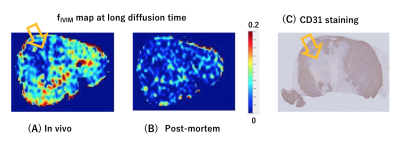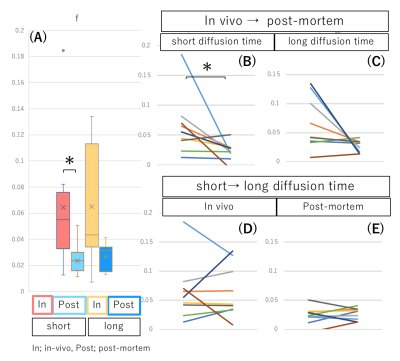Yuko Someya1, Mami Iima1,2, Hirohiko Imai3, Hiroyoshi Isoda1, Masako Kataoka1, Denis Le Bihan4,5,6, and Yuji Nakamoto1
1Department of Diagnostic Imaging and Nuclear Medicine, Kyoto University, Kyoto, Japan, 2Department of Clinical Innovative medicine, Institute for advancement of clinical and translational science, Kyoto University Hospital, Kyoto, Japan, 3Department of Systems science, Graduate School of Informatics, Kyoto University, Kyoto, Japan, 4NeuroSpin/Joliot, CEA-Saclay Center, Paris-Saclay University, Gif-sur-Yvette, France, 5Human Brain Research Center, Kyoto University Graduate School of Medicine, Kyoto, Japan, 6National Institute for Physiological Sciences, Okazaki, Japan
1Department of Diagnostic Imaging and Nuclear Medicine, Kyoto University, Kyoto, Japan, 2Department of Clinical Innovative medicine, Institute for advancement of clinical and translational science, Kyoto University Hospital, Kyoto, Japan, 3Department of Systems science, Graduate School of Informatics, Kyoto University, Kyoto, Japan, 4NeuroSpin/Joliot, CEA-Saclay Center, Paris-Saclay University, Gif-sur-Yvette, France, 5Human Brain Research Center, Kyoto University Graduate School of Medicine, Kyoto, Japan, 6National Institute for Physiological Sciences, Okazaki, Japan
iWe investigated the time-dependency of IVIM /non-Gaussian diffusion parameters in vivo and post-mortem using breast xenograft models (MDA-MB-231). The change in these parameters might provide additional information to evaluate a tissue microstructure.

Figure4. A representative case of fIVIM map at long diffusion time (A; in vivo, B; post-mortem and C: CD31 staining). fIVIM values dropped post-mortem as expected, due to the lack of perfusion, but did not reach 0. The lower fIVIM area was well correlated with the CD31-negative non-brownish area (arrow).
